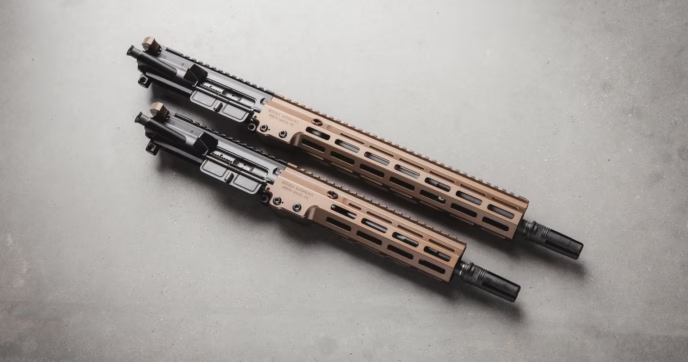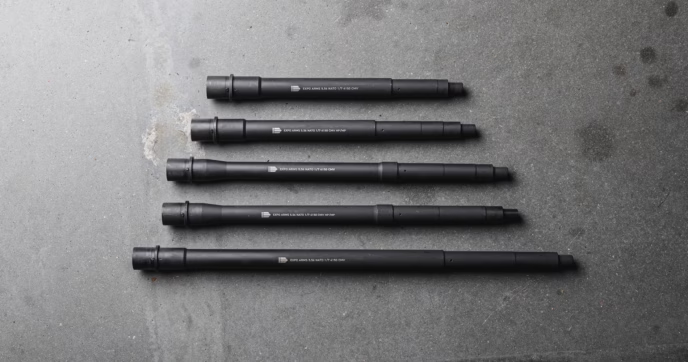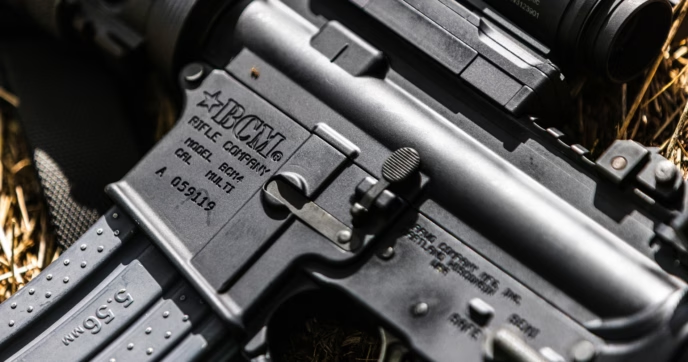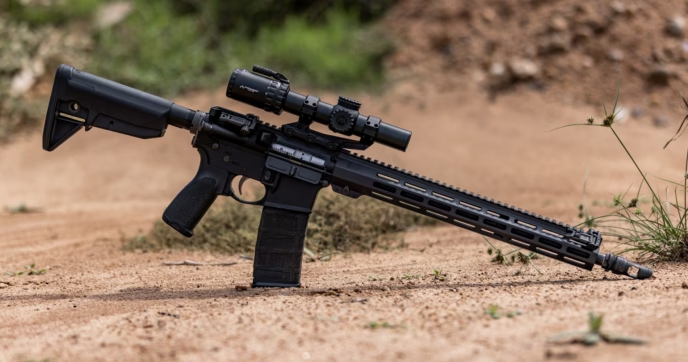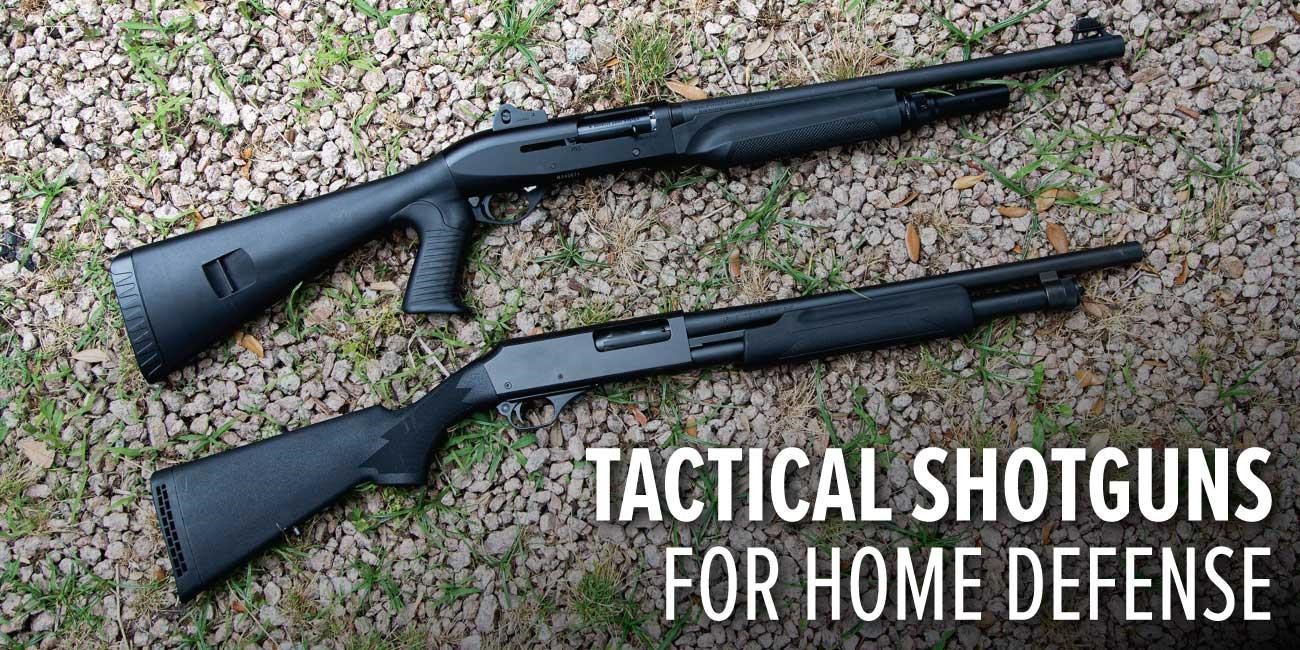
There was a time when the shotgun ruled supreme as the defensive weapon of choice. A 12-gauge loaded with double-ought could be found in every squad car and under every gun owner’s bed. Now, the AR-15 has largely supplanted the tactical shotgun, tied for pistols as the orthodox choice for the ideal home defense weapon.
There are a lot of good reasons for this—it’s hard to argue with high-capacity, low-recoil, and a manual of arms that’s so simple, that most people can learn it in under an hour. All that notwithstanding, there are still plenty of reasons to choose a tactical shotgun for when things go bump in the night.
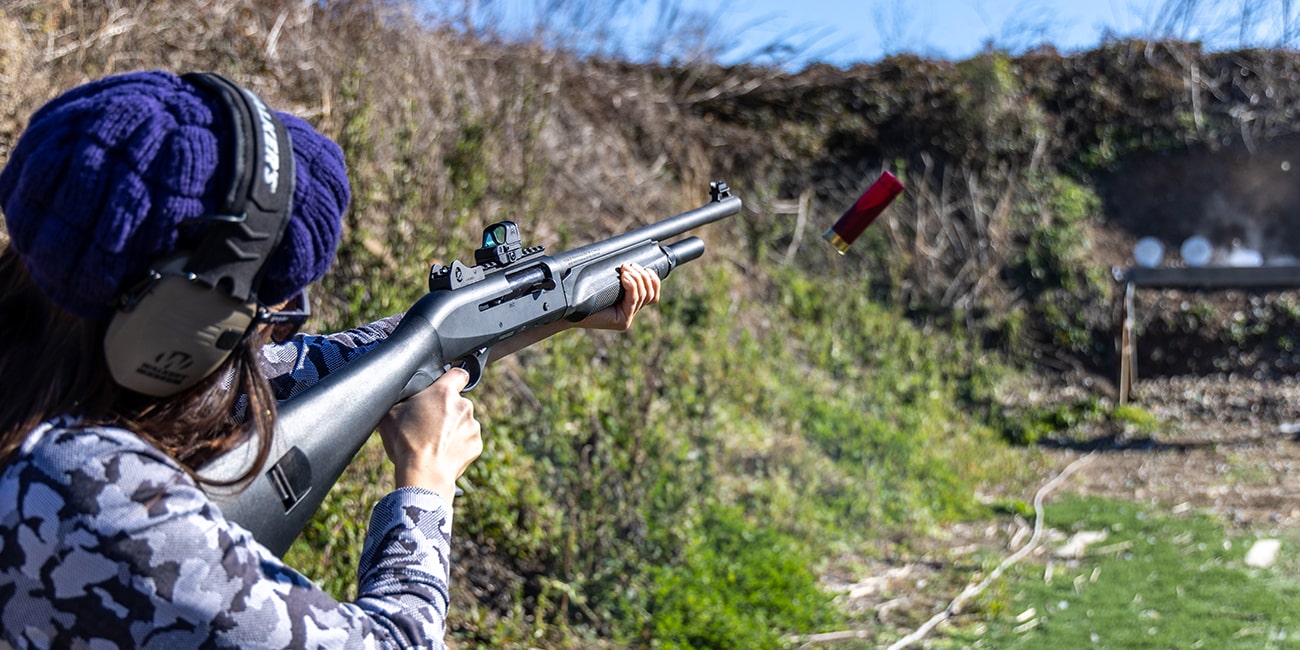
WHY A SHOTGUN?
For users who live in a state with magazine capacity or feature restrictions, a shotgun makes a lot of sense. If you’re only allowed ten shots, you’d better make them count. Similarly, even if AR-15s and other modern semi-automatic rifles are prohibited, a shotgun is still a very viable defensive firearm—especially when compared to other options available in such jurisdictions, such as bolt- or lever-action rifles.
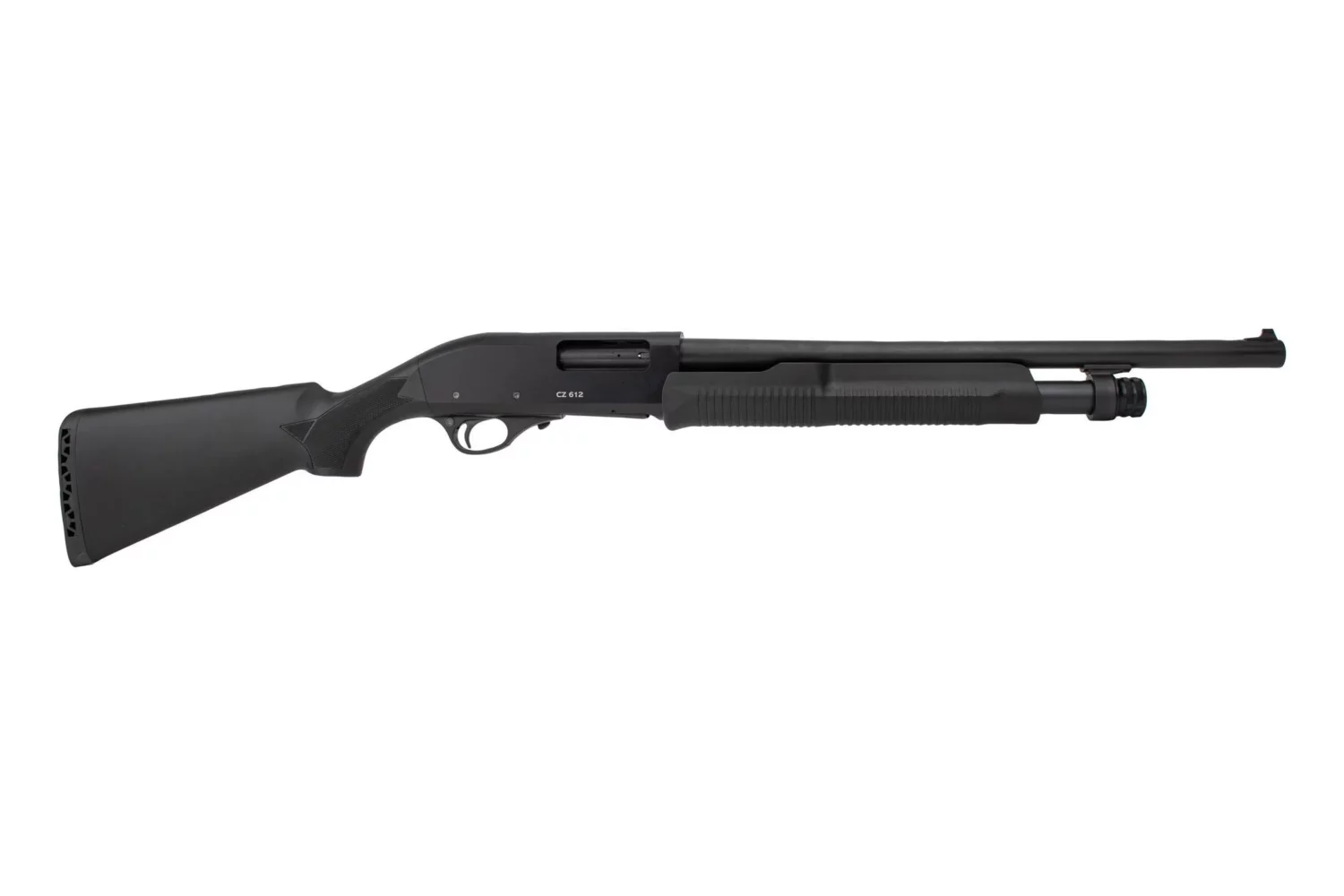
Shop All In Stock Shotguns & Parts
The same goes for those who can’t afford an AR-15 but still need to protect their home. Pound for pound, shotguns are often more affordable than AR-15s of similar quality.
While shotguns can be trickier to operate under stress, not everyone is a beginner. If you grew up hunting waterfowl or shooting clay pigeons, you probably have a lot of the muscle memory down already. This makes you a lot less likely to fumble or induce a malfunction, even during a stressful event.
Lastly, there’s the question of terminal effect. AR-15s are great rifles, and .223 Remington/5.56×45 NATO has proven its effectiveness, but the question of its efficacy at short range is far from settled.
There are downsides to 12-gauge 00 buckshot, but terminal ballistics isn’t one of them. From what data exists, 12-gauge is cited as having the highest one-shot-stop ratio of any common defensive loading. And when many self-defense situations are settled in the first shots, a shotgun will not leave you wanting for ‘stopping power.’
That said, we’re not going to tell you that tactical shotguns are superior to AR-15s for home defense, but they are a competitor. If you’re going to keep a shotgun handy to protect yourself and your home, though, you ought to have the right shotgun.
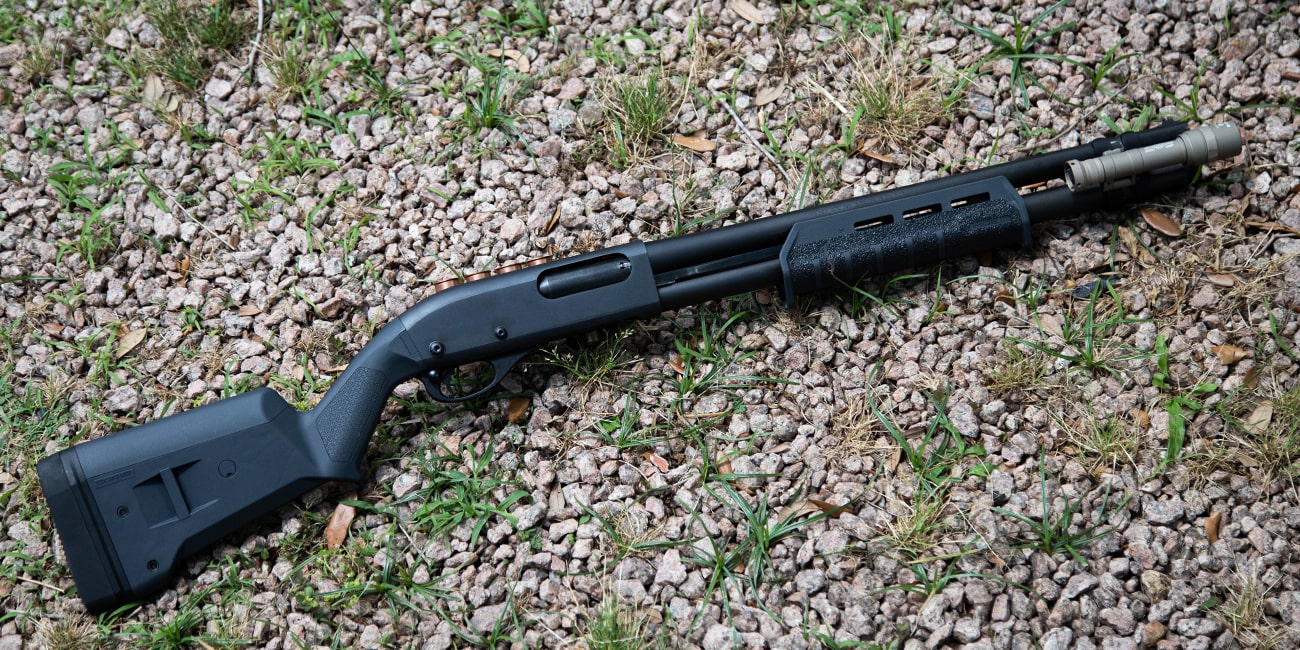
TACTICAL SHOTGUNS: PICKING A SHOTGUN
Nearly any shotgun can be pressed into service as a home-defense firearm, but some are more suited to the role than others. The primary factors we want to look at when choosing a tactical shotgun are barrel length, ammo capacity, iron sights, and aftermarket support.
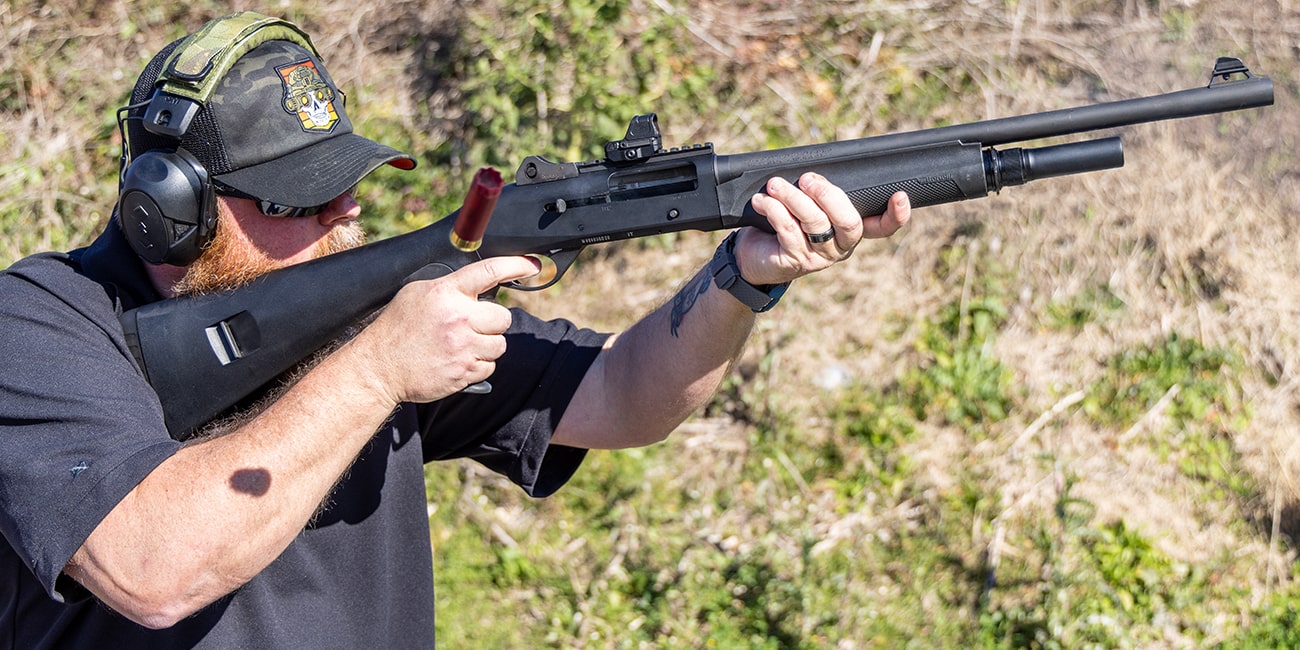
BARREL LENGTH
Barrel length is especially important. One of the biggest drawbacks of shotguns is that they tend to be longer than rifles, which can make them unwieldy indoors. Choosing a shotgun with a shorter barrel can minimize this.
A home defense shotgun is a short-range tool, unlikely to ever take a shot over 15 yards. Even if you have a particularly large house, you probably don’t have any hallways longer than 25 yards. At these distances, barrel length doesn’t particularly matter—even with an 18.5″ barrel and cylinder bore, buckshot is going to hit plenty hard and usually won’t spread enough to matter.
Despite what you’ve seen in movies or games, shotguns don’t spread all that much in CQB distances. There’s an old myth that spread increases by one inch per yard to target, but any patterning test will usually debunk that. Inside 30ft, you can expect around two to three inches of spread. That said, if you choose a tactical shotgun for personal defense, it is worth doing patterning tests with your favored defensive load to fully understand your limitations and spread expectancy.
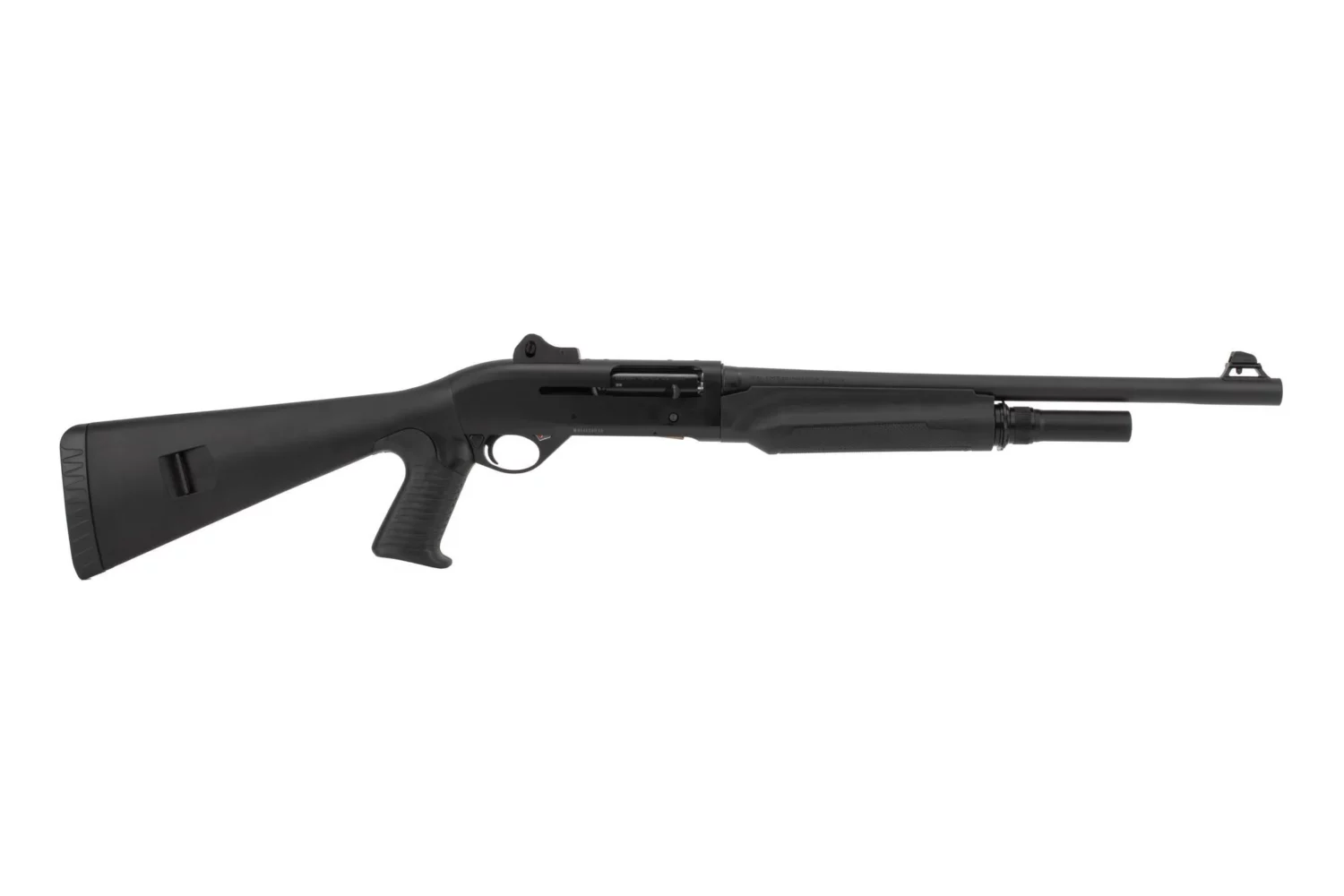
Since home defense demands corridor maneuvering, we recommend sticking with a barrel 20 inches or less for a home defense shotgun. The reduced weight and length are more than worth the tradeoffs. 18.5 inches is the shortest you can go before getting into NFA territory, but in some models, opting for a 20-inch barrel allows you to get one extra shell in the magazine, so the slight additional length may be worth it.
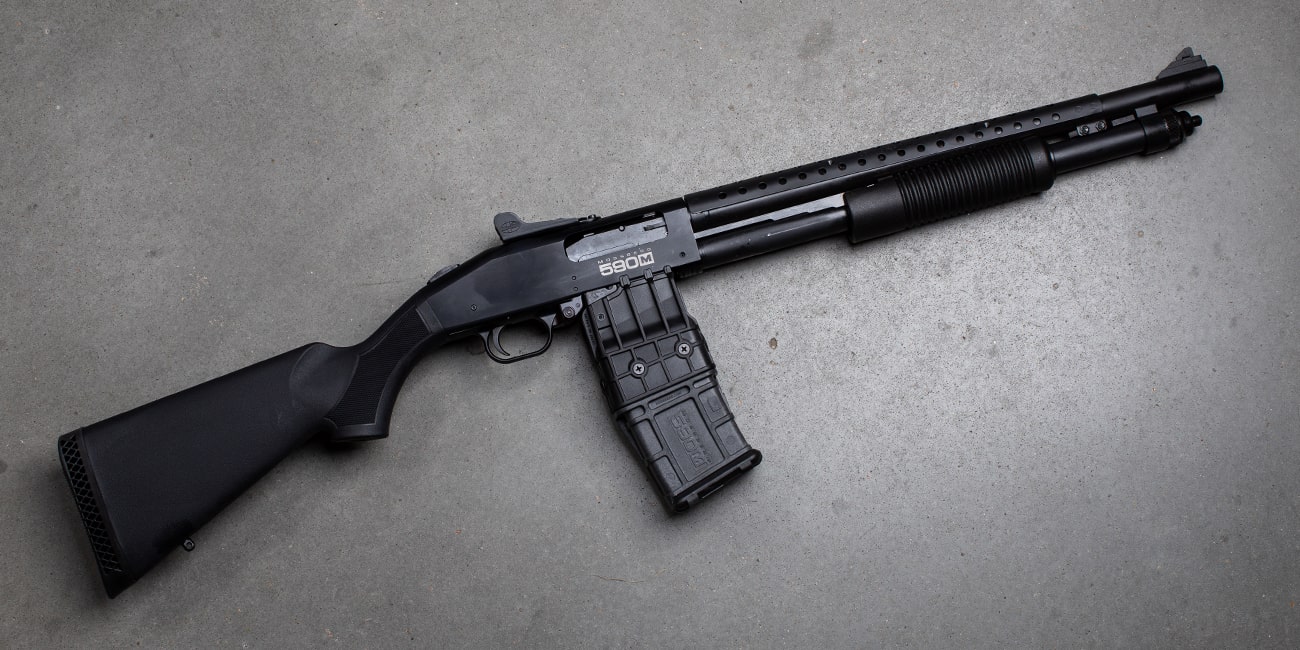
AMMUNITION CAPACITY
When it comes to ammo, more is better. Shotguns are already at a disadvantage when it comes to ammo capacity compared to semi-automatic rifles and handguns, so it’s important to maximize the amount of ammunition you do have available.
A good defensive shotgun should have a tubular magazine that extends to the full length of the barrel, or near it. There’s no tangible benefit to having a magazine tube that stops shy of that since you’d be giving up ammo capacity without anything in return. That said, your magazine tube shouldn’t extend beyond the muzzle of your barrel either. Such setups are fine for competition, but as we discussed during barrel length, you want the shortest, handiest set-up possible.
An alternative option is to choose a magazine-fed shotgun. Mag-fed shotguns are getting more and more popular and for good reason; they can often offer increased capacity and much faster reloading than tubular magazine models. However, it’s important to be aware of the potential trade-offs. Some magazine-fed shotguns suffer from decreased reliability compared to more traditional designs.
Even mag-fed shotguns that are perfectly reliable on the range may not be suitable for defensive use. Shotguns shells are primarily made of plastic, so unlike centerfire ammunition, they don’t always handle extended storage in a magazine very well.
It’s not uncommon for shells stored in a magazine to be compressed by the spring and follower over time, deforming the plastic body into an oval shape rather than a circle. The deformed shape then causes feeding and cycling issues when fired.
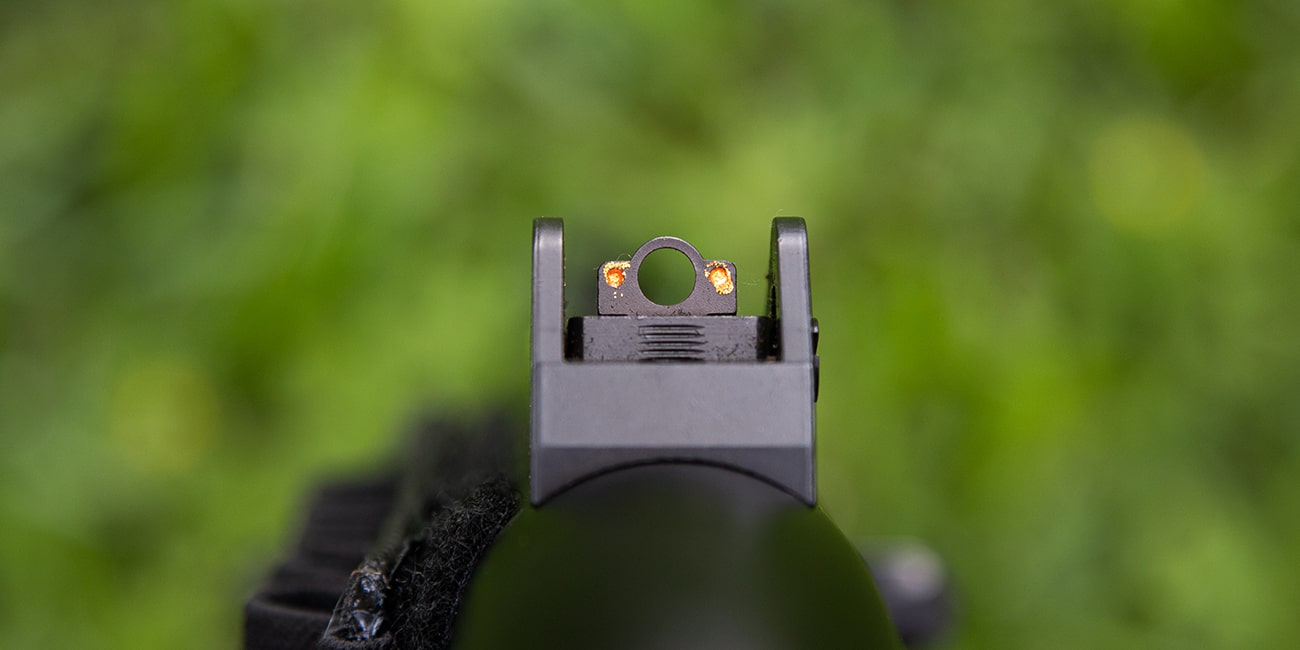
IRON SIGHTS
The average shotgun is going to come from the factory with some manner of bead sight, usually either brass or fiber optic. It’s a time-tested design that’s great for hunting and busting clays, but it can also be imprecise with slugs and difficult to pick up in low lighting.
For a tactical shotgun, the best option is a ghost ring sight. This design works similar to peep sights but uses a larger rear ring that blurs and practically disappears when aiming. Some designs even incorporate tritium into the front sight, making it easy to find even in darkness. These sights are perfect for defensive shotguns because they’re fast and easy to pick up while still offering enough precision to get the job done.
Some tactical shotguns, especially older models, opt instead for traditional three-dot notch-and-post sights instead. While these are perfectly serviceable, ghost ring sights are still a better option as they tend to be a bit faster and more intuitive.
Of course, if you plan to run a red dot on your tactical shotgun, the style of iron sights is considerably less important. In that case, the main thing is to find a shotgun with the ability to mount a Picatinny rail on the receiver, which leads us to our last criterion.
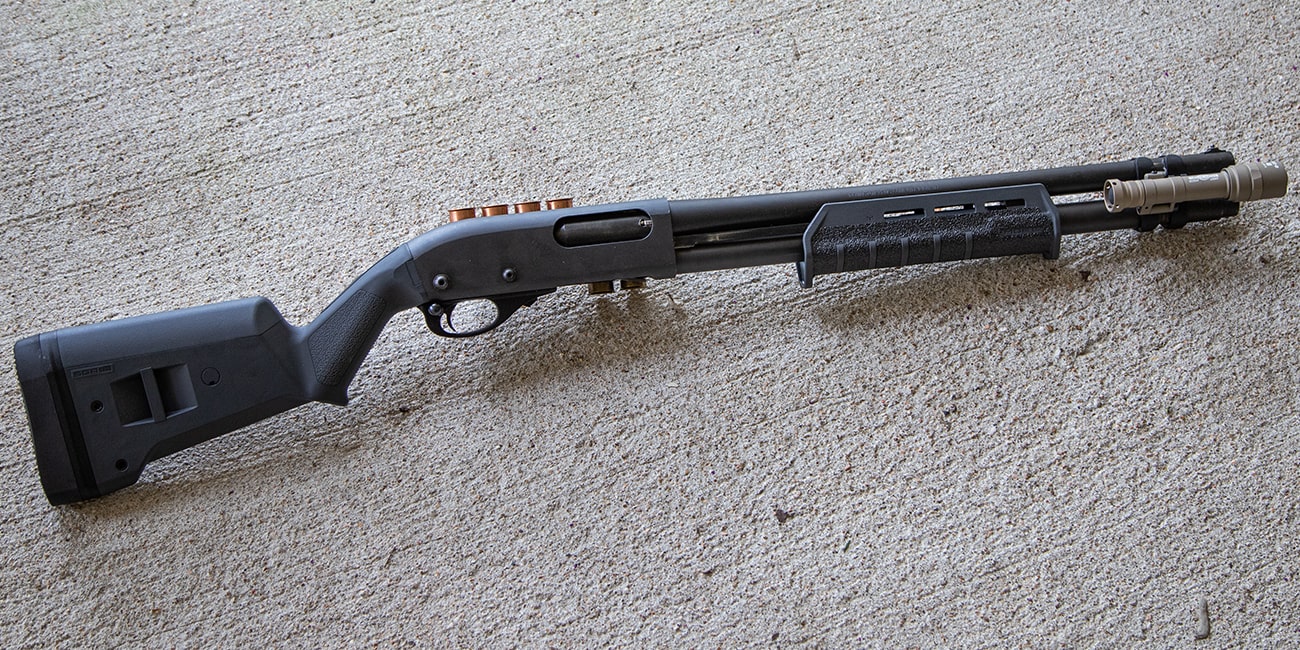
AFTERMARKET SUPPORT
It’s pretty rare that any gun will come just the way you want it out of the box. This is doubly true for tactical shotguns; no matter what model you buy, you’re almost certainly going to want to change something at some point. When that time comes, it’s important to have decent aftermarket support.
Common upgrades include more ergonomic stocks, railed forends or pumps, red dot sights, flashlights, etc. There’s quite a lot that can be tweaked on a tactical shotgun to make it better suited to your specific use case.
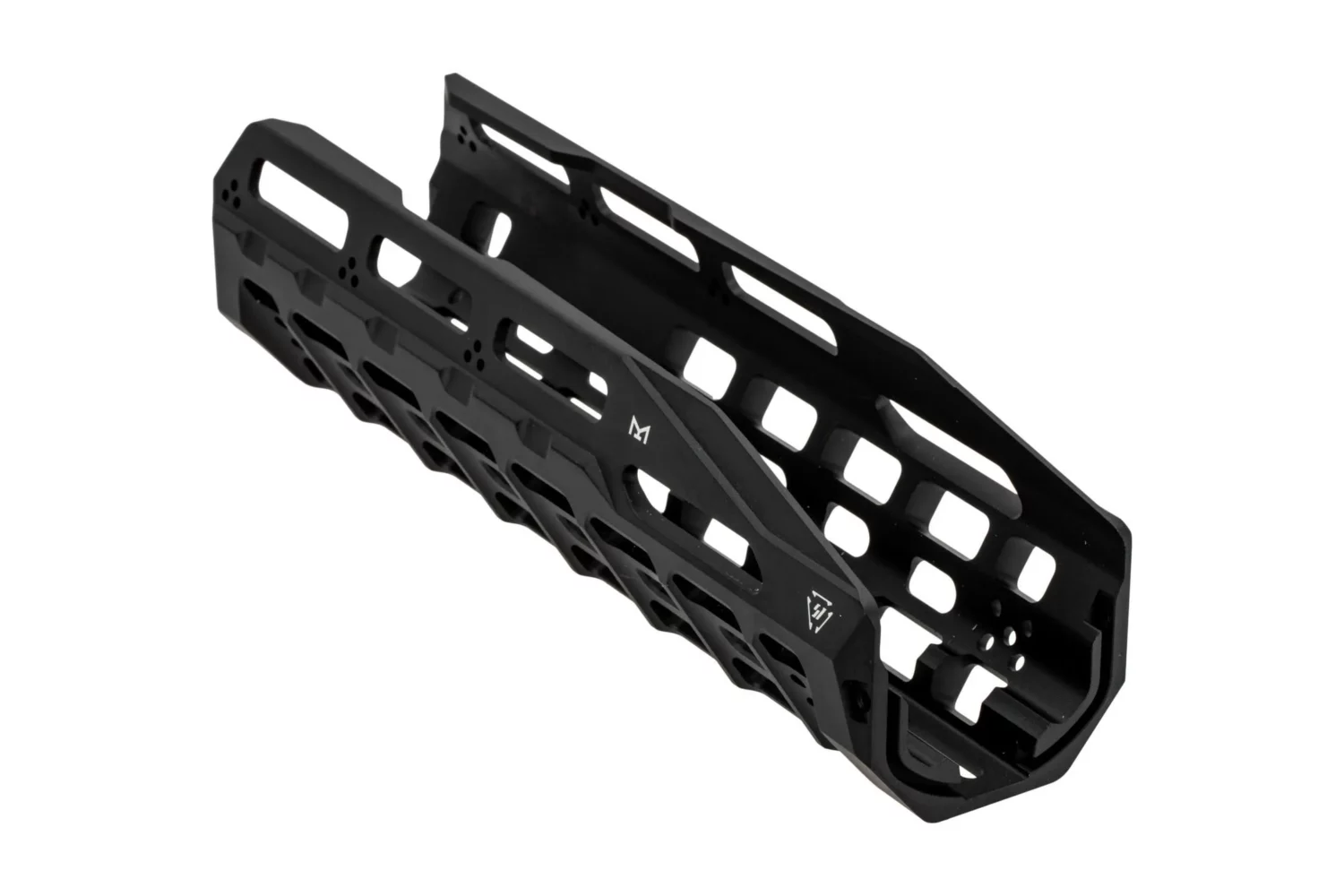
Shop All In Stock Shotgun Parts
Few shotguns are going to meet all the criteria we’ve laid out above, but aftermarket support can help correct that. You might find a shotgun with the right barrel and sights, but a 4-shell capacity. This is where a good aftermarket can be invaluable, offering high-quality and reliable magazine tube extensions.
Most of the common models, such as a Remington 870, Mossberg 500, or the iconic Benelli M4 will have plenty of aftermarket support available. less popular brands, though, may not have the same options, although many less-common shotguns on the market are designed to function with most or all of the accessories available for the aforementioned models.
HOW TO BUILD A TACTICAL SHOTGUN
Once you’ve picked out a shotgun, there’s still the matter of properly outfitting it for home defense. We’ve got a whole list of modifications, from trivial to essential, that can help you make the most of your tactical shotgun.
TACTICAL SHOTGUNS: WHAT YOU NEED
These recommended accessories could be considered as necessities. They should be your first upgrades, done as soon as possible after getting your shotgun.
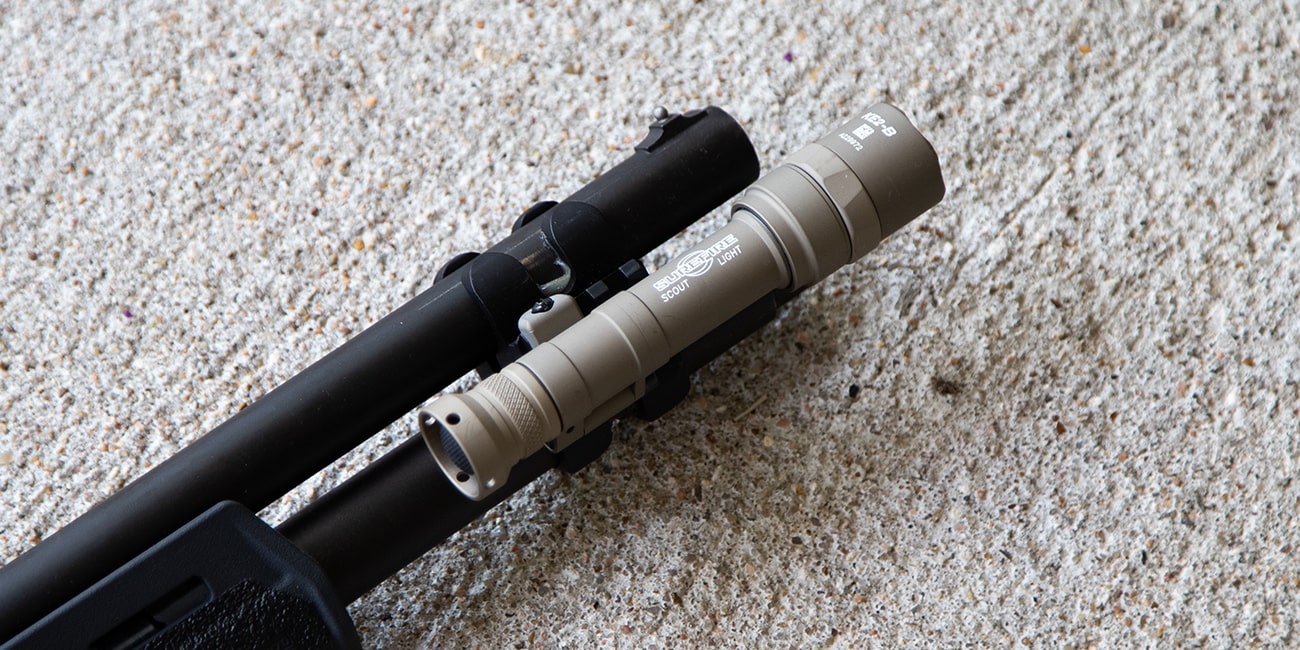
WEAPON LIGHT
Danger doesn’t always limit itself to business hours, so any home-defense firearm needs to have a good weapon light. This is especially important for a long gun; it’s not ideal, but you can use a handgun and a standard handheld flashlight at the same time. With a rifle or shotgun, that’s not really an option. For that reason, a dedicated weapon light is a must.
Surefire, Streamlight, Cloud Defensive, Modlite: all of these companies make top-quality lights that output plenty of lumens for indoor use. Pick your favorite, or pick the one that fits your budget the best. As long as you’re buying from a reputable manufacturer, your mount will make a much larger difference than the model of flashlight you choose.
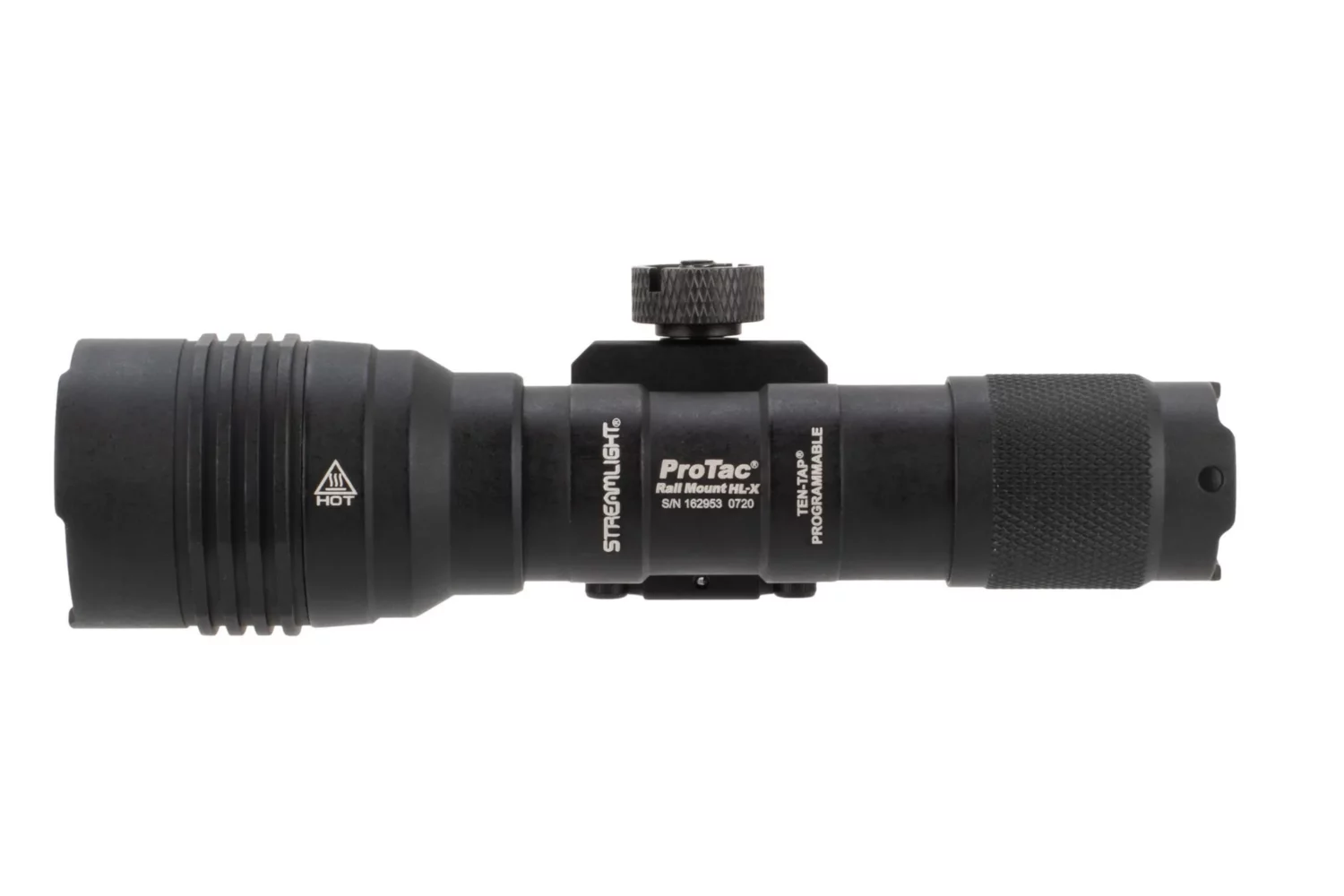
Shop All In Stock Weapon Lights
Most shotgun light mounts break down into two categories: barrel clamp mounts and rail mounts.
Rail mounts work much as they do on any other firearm, attaching the light to a section of Picatinny rail on your shotgun. This is perfect for semi-automatic shotguns or pump-actions with plenty of forward rail space, such as the Kel-Tec KSG-12. On most traditional pump-actions, though, the only place where rails can be added forward of the action is on the forend.
Because the forend is used to pump the action, this means that the light will reciprocate with it during cycling, which is a double-edged sword. On the one hand, having the light on the forend means that it is never out of reach. On the other, having your light source move every time you cycle the action can be very disorienting, not to mention create a very large barrel shadow every time the light moves rearward.
Barrel clamp mounts do exactly what the name suggests: they use a clamshell design to clamp onto the barrel and magazine tube and provide either a rail or a ring with which to mount your light. These designs avoid interfering with the action of the forend during cycling and hold the light in a static position. However, with a barrel-clamp mount, your light won’t be accessible while you’re cycling the firearm. Whether it’s on or off, that’s how it’s going to stay until you’ve finished actuating the forend.
Both designs have their merits, and neither is inherently better than the other. It is important to be aware of the differences, though, and to train to make up for their specific drawbacks. For example, if you opt for a rail-mounted light on your shotgun’s forend, you’ll want to put in a good quantity of time practicing tracking targets in low light while cycling.
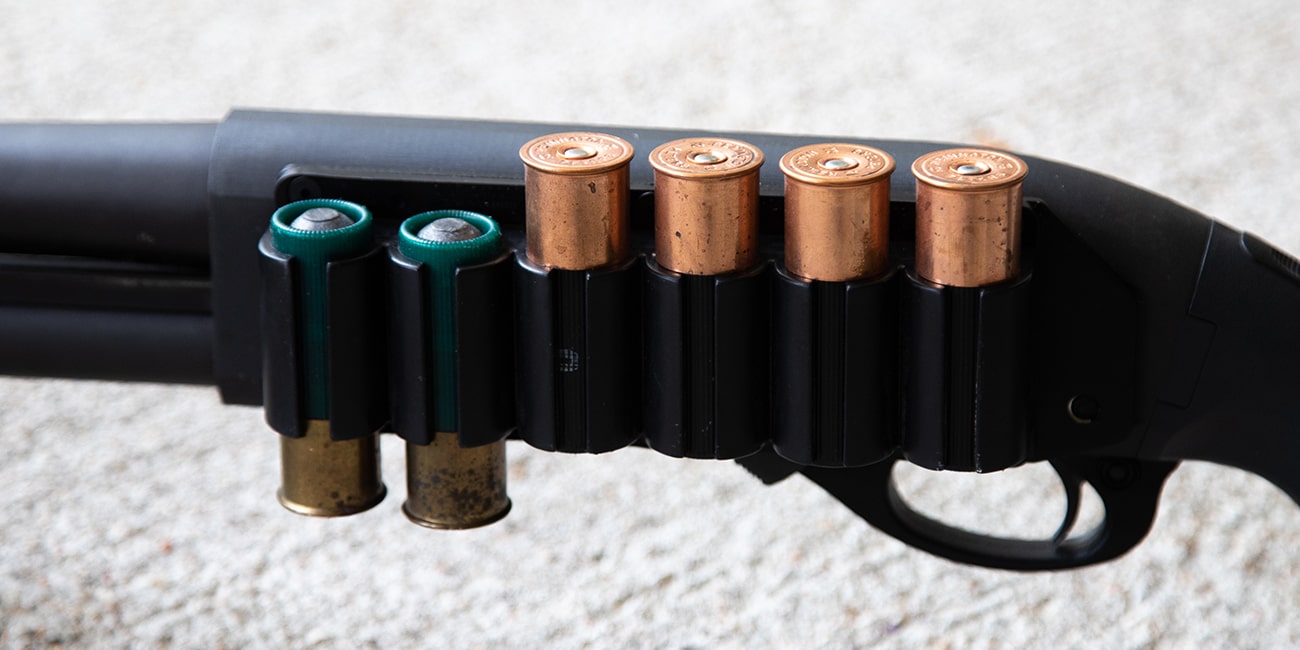
AMMO STORAGE
The biggest downside to tactical shotguns is the limited ammo capacity, so we want to do everything we can to ameliorate that. Ammo carriers and extra shells are all well and good, but should you ever actually need to use your shotgun, odds are you won’t have time to don a belt and shell caddy. For that reason, when we talk about adding ammo storage, we’re limiting ourselves to just onboard storage.
The most common version of onboard shotgun shell storage is a sidesaddle. This accessory bolts to the side of your shotgun’s receiver and holds 4-6 extra shells. Adding more ammo to your tactical shotgun will increase the weight a bit, but it’s a small price to pay for a 50-100% increase in available ammo.

TACTICAL SHOTGUNS: NICE-TO-HAVE UPGRADES
These upgrades are less crucial than the above category, but still good quality-of-life improvements. If you’re trying to minimize cost, most of these can be skipped, but if you really want to make the most of your tactical shotgun, they’ll help you squeeze every last bit of performance out of it.

OPTICS
If your tactical shotgun came with a good set of ghost ring sights, optics aren’t strictly necessary. Ghost ring sights are fast and easy to use under stress. That said, for most users, a quality red dot is still a bit faster. You’ll want a dot that’s small, lightweight, and can be left on for years at a time without a battery change. That way, you can set your red dot to your preferred brightness and have it be ready to go as soon as you pick up your shotgun; no fiddling with power switches or settings.
We’d recommend something like our Primary Arms® SLx® Advanced Rotary Knob Microdot. It’s small enough not to take up too much of your field of view, boasts 50,000 hours of battery life, and weighs less than 6 ounces.

Shop All In Stock Primary Arms Red Dot Sights
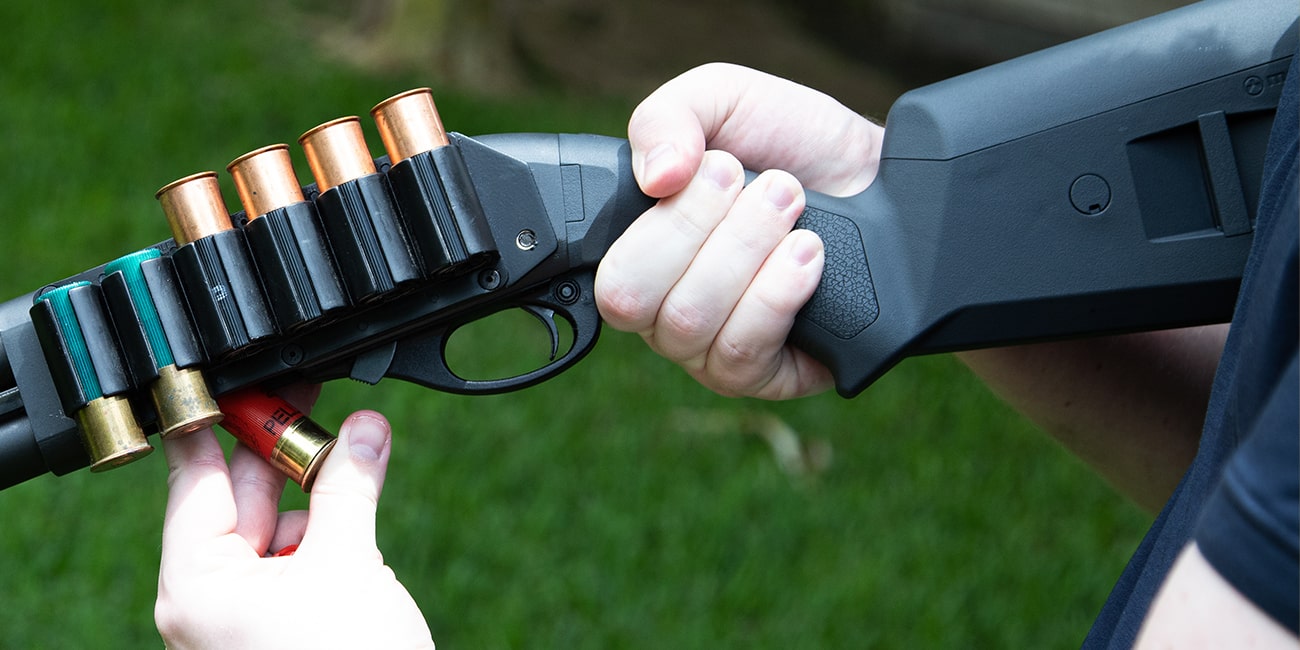
STOCKS AND GRIPS
This is where we start to get into marginal improvements. The stock on most tactical shotguns, whether a traditional stock or a pistol grip design, is usually fine. However, they can have certain drawbacks. Most factory stocks are just polymer versions of the same stock manufacturers use for their hunting models. They typically have a longer-than-ideal length of pull for defensive use.
A shorter length of pull will help to reduce the overall length of the gun, as well as make it easier to grip without the “chicken wing” effect. The “chicken wing” refers to users’ tendency to stick their dominant elbow straight out when shouldering a traditional rifle or shotgun. This increases your overall size as a target, so it’s preferable to tuck your elbow as close to your body as possible.
A pistol-grip stock (one with a pistol grip and a stock, not a pistol grip instead of a stock) can also make it more comfortable to tuck your elbow when shooting. In many cases, this configuration allows for a retractable stock, which can make the gun easier to store or configure for female shooters with shorter arms.
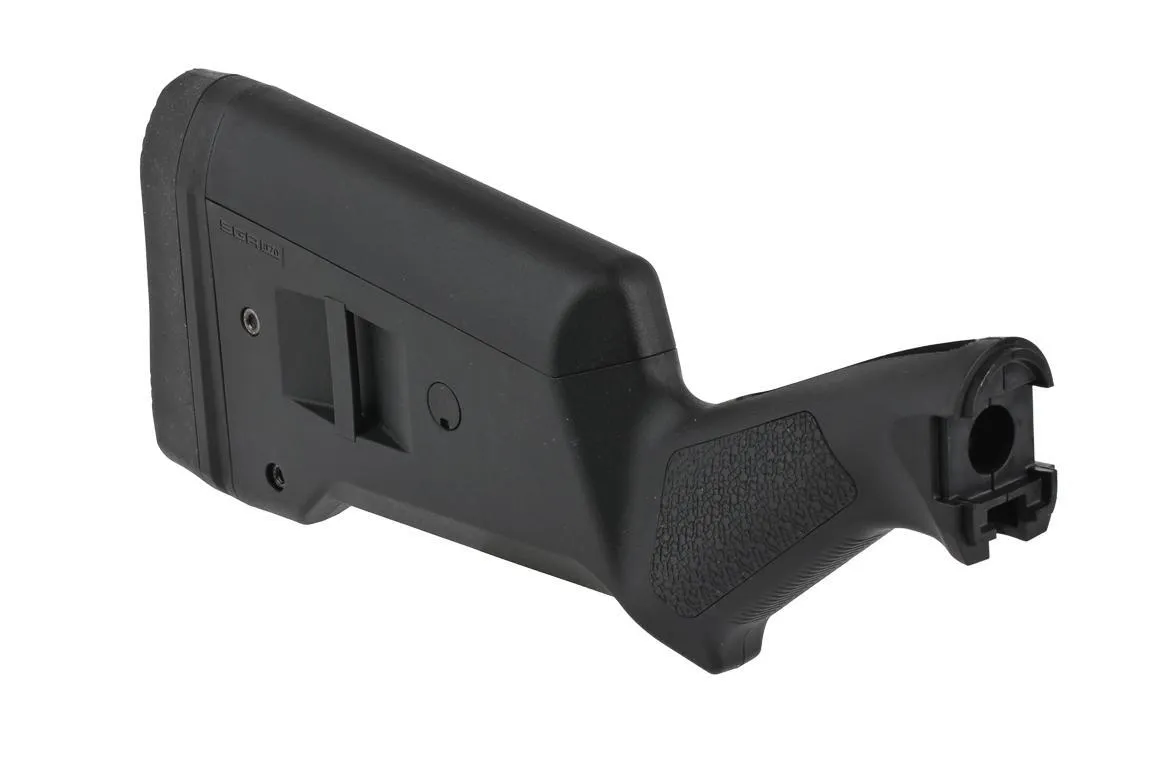
Shop All In Stock Shotgun Stocks
Upgraded stocks and grips can also offer more aggressive texturing to reduce slippage when your hands are wet or sweaty. Some models even integrate thick rubber pads to help tame recoil.
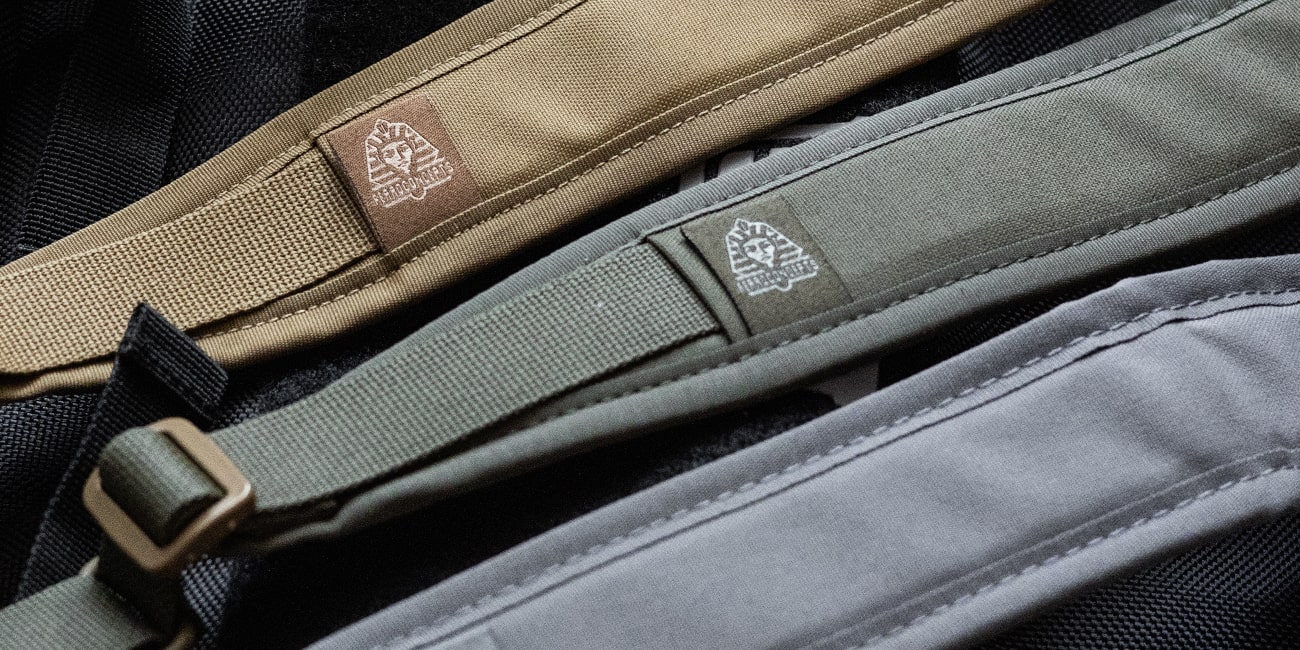
SLINGS
Depending on your specific use case, a sling can be either a necessity or a convenience. If you live alone and your action plan in the event of a break-in is to point the muzzle at your bedroom door and call the cops, a sling isn’t really required. On the other hand, if you live with others, you might have to navigate through the house to protect them. In this case, it might be a good idea to have a sling equipped.
A good sling serves a few different purposes for a home-defense shotgun. First and foremost, it allows you to take one or both hands off the firearm without having to set it down. If you have to open a door while investigating a suspicious noise in the dark, a sling can bear some of the weight and make it easier to stabilize the firearm while you have a one-handed grip. Your sling also works as a retention device, making it much more difficult for someone to try to snatch the shotgun away from you.
For your home defense sling, you want something light, sturdy, and adjustable. A quick-detach function is convenient, too, but unlikely to be necessary. A basic sling from Ferro Concepts, Blue Force Gear, or Forward Controls Design will do nicely.
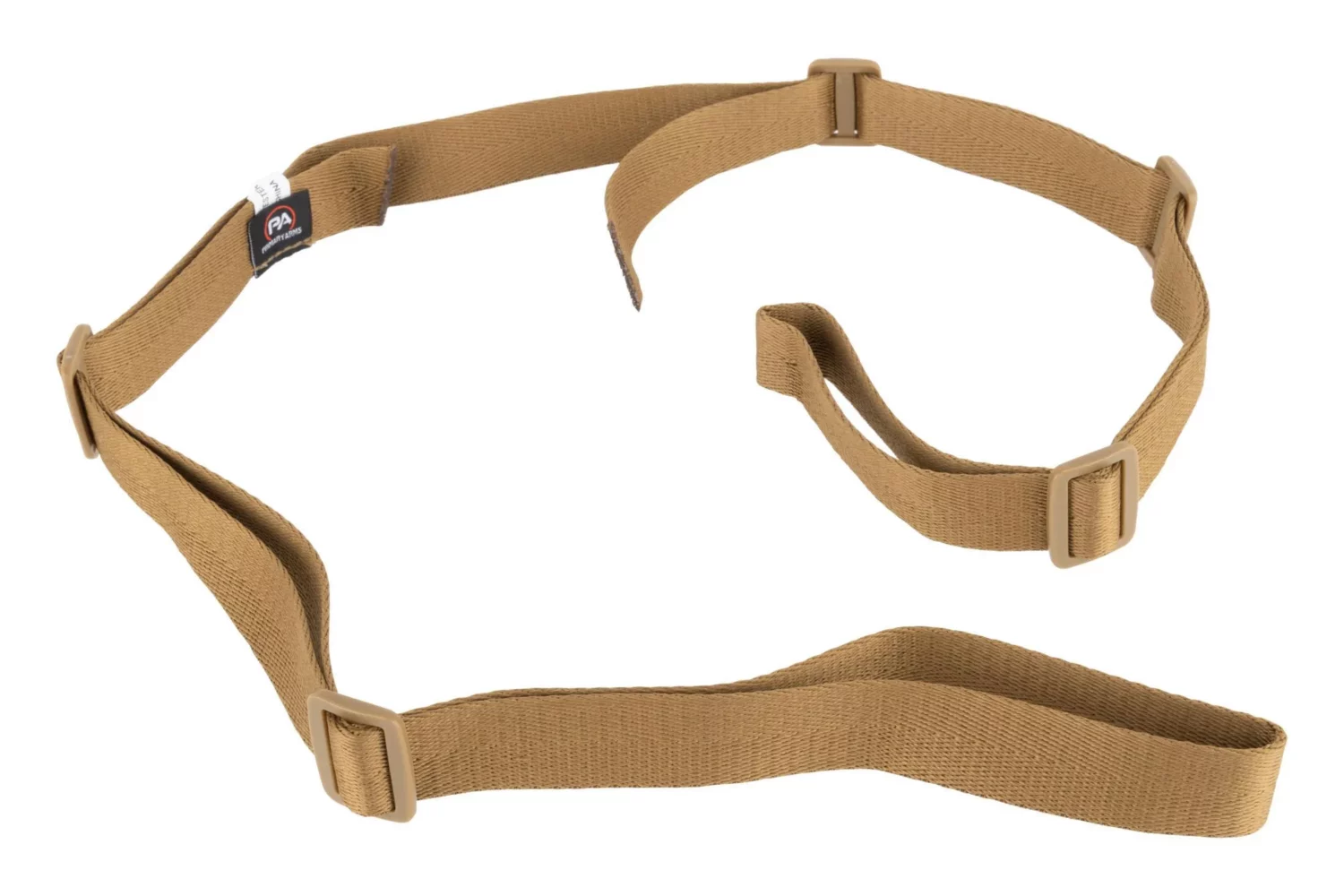
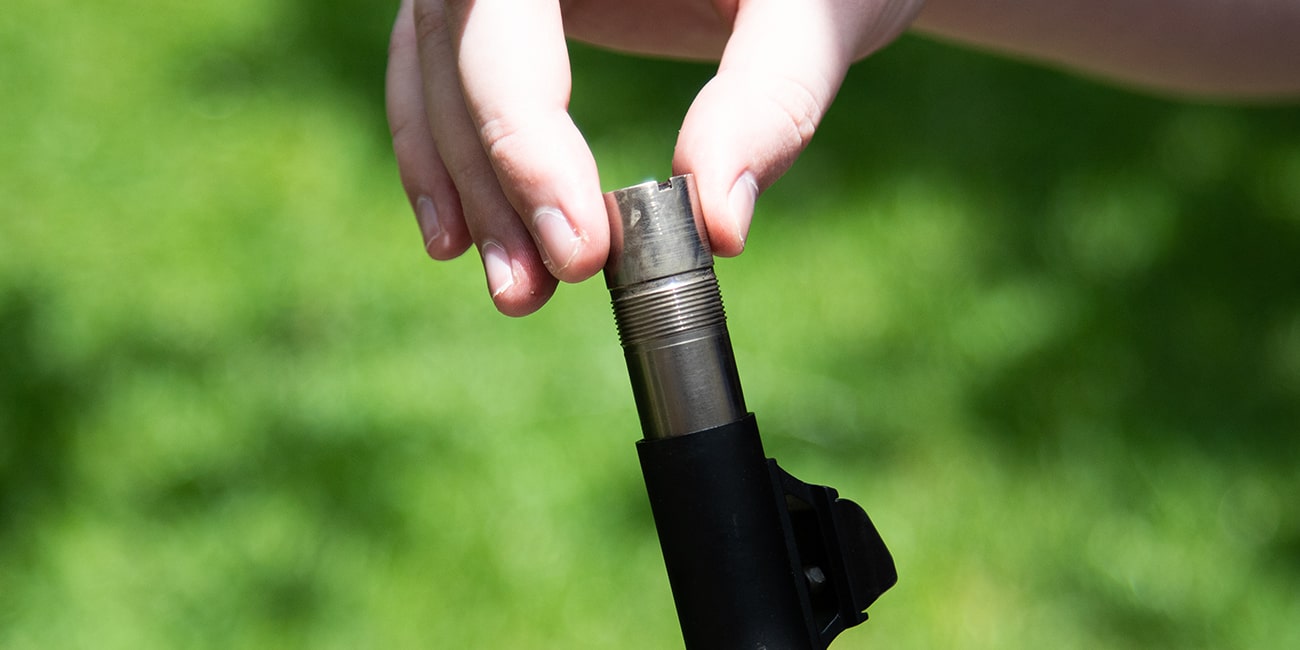
TACTICAL SHOTGUNS: WHAT YOU REALLY, REALLY DON’T NEED
Not every accessory available for your shotgun is appropriate for a tactical build. Here are a few examples of upgrades that are best left to hunters and competitors—or in some cases, no one at all.
CHOKES
Shotgun chokes serve a lot of legitimate purposes, but in a tactical shotgun, they’re just not necessary. Your buckshot isn’t going to spread enough at 15 yards to justify a choke, so all the choke really does is add an additional potential failure point.
Some users may point to police-issue shotguns as an example of a tactical shotgun that does utilize a choke. That’s fair; some police departments do use specialized chokes, often called breaching chokes, to aid in busting down doors. These chokes usually don’t actually tighten the shot spread pattern; their purpose is to prevent a gas seal from being created when the muzzle of the shotgun is shoved against a softwood door. A gas seal would result in undue stress on the barrel when a round is fired, sometimes leading to a catastrophic failure.
While this is tactical in nature and a legitimate purpose for a choke, unless you have a need to breach your own doors for some reason, chokes are entirely unnecessary in home defense shotguns.
BAYONETS
Some tactical shotguns come with bayonet lugs. This does not mean that a bayonet is a good idea. Bayonet lugs are largely a legacy from older designs, which can be traced back to the original Winchester Model 97. These days, they are essentially just an homage to the ancestry of the tactical shotgun.
Bayonets are length and weight, both of which are negatives in a defensive shotgun. If you’re dead set on adding six inches to the end of your gun, a longer barrel and magazine offer much better utility than a bayonet.
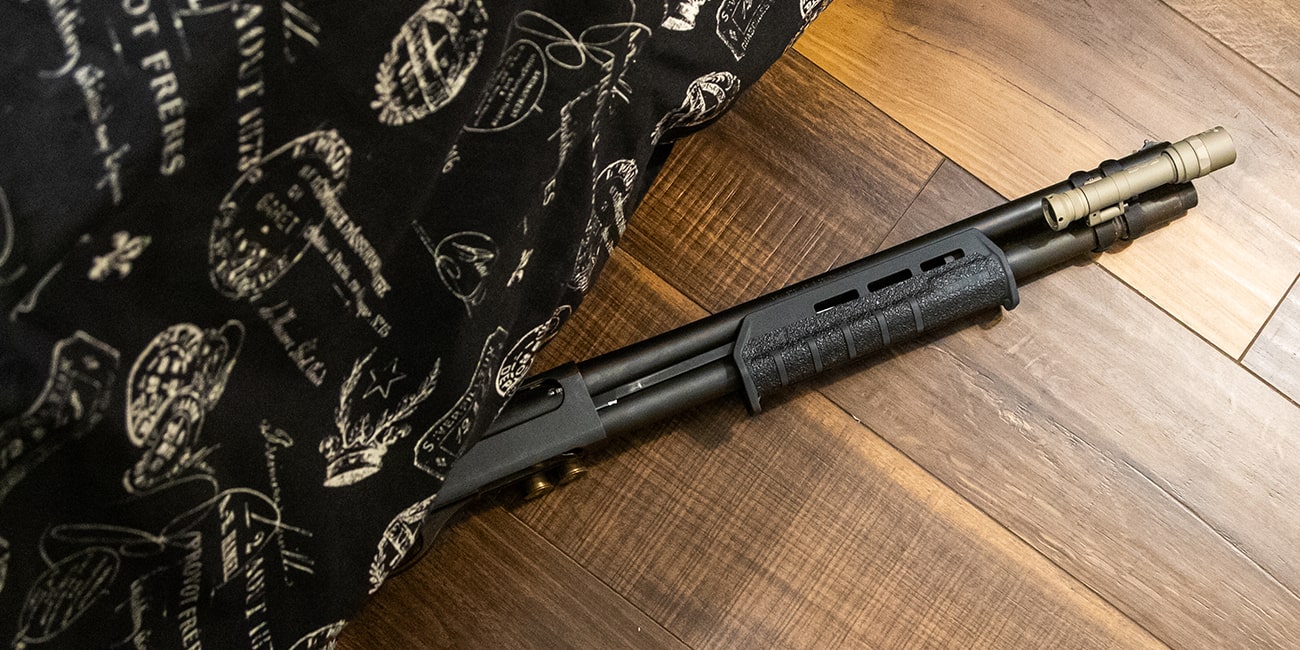
TACTICAL SHOTGUNS: SUMMARY
Tactical shotguns might not be for everyone, but they remain a very practical choice for a home-defense firearm. As long as you stick to something short, handy, and reliable, you really can’t go wrong.
But no matter which option you choose, make sure that you practice your fundamentals and seek training. Shotguns can be tricky to manipulate, especially under stress. Quality instruction can build your proficiency and ingrain good habits that improve your marksmanship in any condition.
